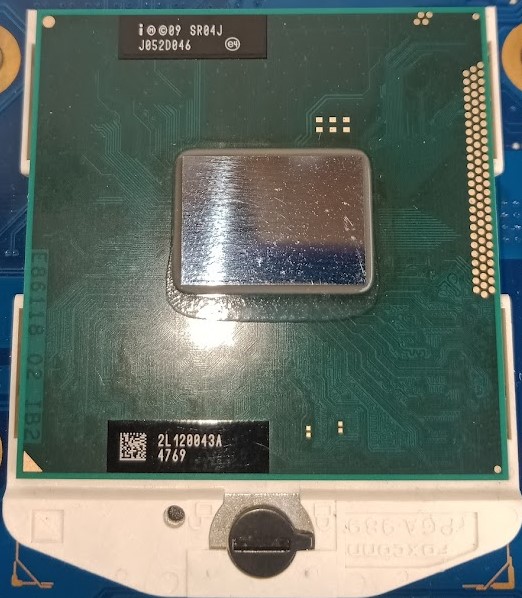Comparing: Intel HD Graphics 3000 Mobile vs Intel UHD Graphics 750
In this comparison, we analyze two Videocards: Intel HD Graphics 3000 Mobile and Intel UHD Graphics 750, using synthetic benchmark tests to evaluate their overall performance. This side-by-side comparison helps users understand which hardware delivers better value, speed, and efficiency based on standardized testing. Whether you're building a new system or upgrading an existing one, this benchmark-driven evaluation offers valuable insights to guide your decision.

Intel HD Graphics 3000 Mobile
| Type: | Videocards |
|---|---|
| Brand: | Intel |
| Model: | HD Graphics 3000 Mobile |

Intel UHD Graphics 750
| Type: | Videocards |
|---|---|
| Brand: | Intel |
| Model: | UHD Graphics 750 |
Specification Comparison Table
This specification comparison presents technical details of several devices or components to help you understand the key differences between each option. Use this table as a reference to determine which device best suits your needs.
| Specification | Intel HD Graphics 3000 Mobile | Intel UHD Graphics 750 |
|---|---|---|
| Architecture | Sandy Bridge | Rocket Lake |
| Codename | Sandy Bridge GT2 | Rocket Lake GT1 |
| Buswidth | 128 bit | SHARED |
| Clock | 650 MHz - 1100 MHz | 350 MHz - 1300 MHz |
| Memory Clock | SHARED | SHARED |
| Technology | 32 nm | 14 nm |
| Interface | IGP | IGP |
| Technology | 32 nm | 14 nm |
| Segment | Laptop | Desktop |
Submission Comparison Table
This submission comparison table displays the number and details of benchmark data submissions from various devices or components. This information helps you understand the performance based on the benchmarks that have been tested, as well as providing an overview of the consistency and popularity of the available benchmark results.
Submission Comparison Chart
This chart visualizes the benchmark scores comparison between two hardware devices based on submitted data.
Media Gallery
A collection of photos of tested hardware. These images can help you identify the physical form, model, and variant of the hardware in question. These photos are from our own documentation, and if they are not available we may not be able to document them.
About Hardware Intel HD Graphics 3000 Mobile
Intel HD Graphics 3000 is an integrated GPU present in the Intel Core i3-2330M processor, part of the second generation of Intel Core based on the Sandy Bridge architecture, released in 2011. The GPU has 12 execution units (EUs) and is capable of operating at speeds up to 1.3 GHz on mobile variants, making it a significant improvement over the previous generation of Intel HD.
Support for DirectX 10.1, OpenGL 3.1, and technologies such as Intel Quick Sync Video make the HD Graphics 3000 capable of handling HD video playback smoothly, including 720p and 1080p formats. The graphics performance is capable enough for light multimedia needs, such as video streaming, simple image editing, and running office applications without any significant problems.
In the context of gaming, the Intel HD 3000 is still capable of running some light and retro games, such as Counter-Strike: Source, Dota 1, The Sims 2, and Need for Speed: Most Wanted (2005) with low graphics settings. However, for modern games with high graphics requirements, this GPU has started to lag behind and does not provide an optimal experience.
This GPU does not have its own VRAM and relies on system RAM, so its performance is highly dependent on the memory configuration. With dual channel 4GB DDR3 RAM, such as the one used in the SAMSUNG 300E4Z laptop, the graphics performance can be more stable than a single channel configuration.
Overall, the Intel HD Graphics 3000 offers a balance between power efficiency and basic performance, making it a viable solution for entry-level laptops with daily use needs. Although it is relatively old, this GPU is still sufficient for light computing activities, especially on operating systems like Windows 7.
Hardware Detail:
Device: SAMSUNG 300E4Z
RAM: 4GB DDR3 Dual Channel
OS: Windows 7
Friday, 05 February 2021 15:48:13 | Update: 1 month ago
About Hardware Intel UHD Graphics 750
Intel UHD Graphics 750 is an integrated GPU used in the 11th generation Intel Core processors (Rocket Lake), including models such as the Core i5-11400 and Core i7-11700. It has 32 Execution Units (EUs) and runs at frequencies up to 1.3 GHz, offering competitive graphics performance in the iGPU (integrated GPU) class. Designed to handle daily graphics tasks, the UHD Graphics 750 is a significant upgrade from its predecessor, the UHD 630, especially in terms of media efficiency and modern codec support.
With support for DirectX 12, OpenGL 4.6, and Vulkan 1.2, the Intel UHD 750 can run multimedia applications, 2D graphics, and light games in a stable manner. Hardware acceleration features for HEVC (H.265), VP9, and AV1 codecs are also present, enabling high-resolution video playback (up to 4K) with lower power consumption. In addition, HDR support makes this GPU suitable for entertainment needs such as video streaming, light video editing, and high-quality visual displays on modern monitors.
This GPU is integrated in systems like the Dell OptiPlex 5090 that use an Intel Core i7-11700 processor, 32GB of RAM, and Windows 10 operating system. In this configuration, the UHD Graphics 750 is able to handle most everyday visual computing needs without the need for a discrete GPU. The graphics performance is sufficient enough to open multiple browser tabs with multimedia content, run productivity applications such as Microsoft Office, Zoom, and even some light e-sport games.
Hardware Detail:
Device: Dell OptiPlex 5090
CPU: i7-11700
RAM: 32GB
OS: Windows 10
Tuesday, 13 June 2023 12:07:50 | Update: 1 month ago



